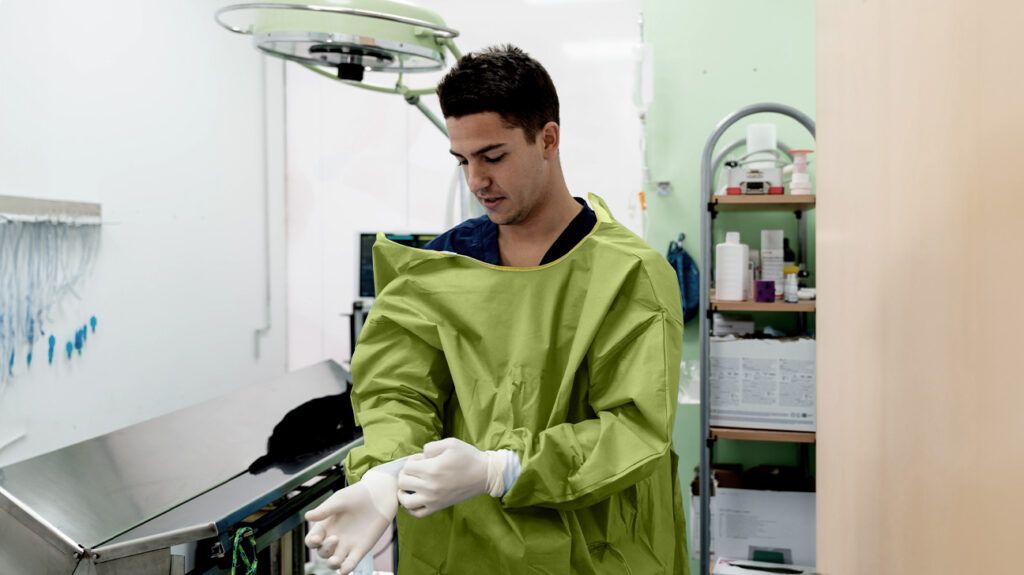The Ross procedure is a major heart surgery. It involves replacing an abnormal aortic valve with a valve from the other side of the heart.
The Ross procedure is a type of aortic valve replacement surgery.
The heart is a muscle responsible for pumping blood throughout the body. It has four valves that prevent blood from traveling backward. Irregularities in these valves affect the way blood moves through the chambers of the heart and major blood vessels and can require the heart to work harder.
This extra pressure on the heart can contribute to severe heart problems later on, such as heart failure. However, aortic valve replacements can help reduce pressure on the heart.
This article explains the Ross procedure, how to prepare for it, what to expect, and its benefits and risks.

The Ross procedure is useful for replacing a damaged aortic valve. The aortic and pulmonary valves have similar shapes, so a surgeon can use the pulmonary valve to replace the aortic valve. The surgeon can then implant a donor valve in the pulmonary valve’s previous position.
The Ross procedure involves the following steps:
- The surgeon cuts through the breast bone.
- The medical team inserts tubes into the heart and the surrounding major blood vessels. These connect to a heart-lung machine that takes over the heart’s blood-pumping role during surgery.
- The medical team stops the heart using medication.
- The surgeon clamps shut the aorta, which is the heart’s main artery.
- The surgeon opens the heart and removes the faulty aortic valve.
- The surgeon
moves the pulmonary valve to the location of the removed aortic valve. - The medical team implants a valve from a donor in the previous location of the pulmonary valve.
- The medical team restarts the heart with controlled electric shocks.
- The surgeon uses wire to close the breast bone.
Learn more about heart valve replacement surgery.
The
Aortic stenosis is a serious heart problem that can lead to heart failure. While this condition is
In children who are not yet fully grown, the pulmonary valve
The Ross procedure can also help with other conditions, such as:
- bicuspid aortic valve, a congenital heart anomaly
- some types of left ventricular outflow obstructive disease
- valve endocarditis, an infection of the heart valve’s lining that can be fatal without treatment
- some forms of adult aortic regurgitation with a dilated aorta, in which a weak or wide aorta leaks blood back into the left ventricle
- severe forms of aortic valve disease that are not responding to or suitable for repair procedures
The Ross procedure is effective because the donor valve is
The aortic valve’s role requires far more pressure to pump blood to the rest of the body. The pulmonary valve can handle the high volume of blood flow in its new position. Meanwhile, the donor valve is more likely to succeed in a position that requires less pressure.
A person’s doctor can discuss with them the Ross procedure’s possible benefits for their condition so that the person can make an informed decision about their treatment plan.
People preparing for the Ross procedure should speak with their cardiologist — a doctor specializing in heart health — about specific steps they may need to take before surgery.
They might need to stop taking medication beforehand. A person’s doctor can also inform them about when they should last eat and drink before the procedure.
If a person smokes, doctors will usually ask them to stop smoking in advance of the surgery. Smoking can increase the risk of complications.
A person may also need to pack clothes and belongings to last them for a week, as this is the usual amount of time they will spend in the hospital. A person’s doctor can provide them with more accurate information about how long they can expect to stay in the hospital after the procedure.
After an aortic valve replacement, people spend around 1 week in the hospital. The length of time may vary depending on age and overall health. The first 1 or 2 days of this time will involve close monitoring in the intensive care unit (ICU).
During admission to the ICU, a person will be connected to a ventilator machine that supports breathing until they can breathe on their own. They will not be able to eat, drink, or speak during this time.
Afterward, the medical team will transfer the person to the surgical ward for the next days of their recovery.
After leaving the hospital, a person may need to avoid driving, sexual intercourse, and manual labor for several weeks or months. They may be able to resume light exercise, such as walking, when they feel comfortable doing so. A doctor
People need
Like any surgery, the Ross procedure poses some risk of complications. Possible complications include:
- bleeding
- stroke
- heart attack
- arrhythmia
- infections
A person can discuss the possible complications with their doctor beforehand. It is also important that a person seek immediate medical help if they experience any serious complications.
Here are some frequently asked questions about the Ross procedure.
Who is eligible for the Ross procedure?
According to a
How rare is a Ross procedure?
Less than
What is the life expectancy for a person after the Ross procedure?
Around
The Ross procedure is an intensive heart surgery for aortic stenosis that usually requires a weeklong hospital stay. It involves removing the aortic valve and moving the pulmonary valve to its former location.
People who undergo the Ross procedure usually need lifelong monitoring afterward. Full recovery can take several months.
Survival rates are generally very good, and a child or young adult who undergoes the Ross procedure may have a typical life expectancy.
